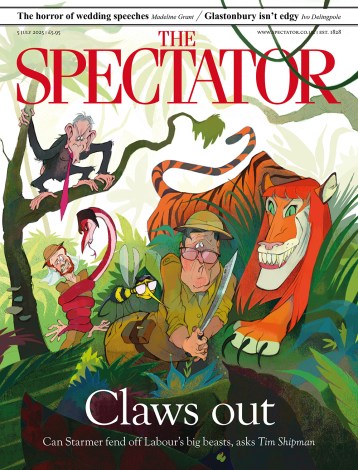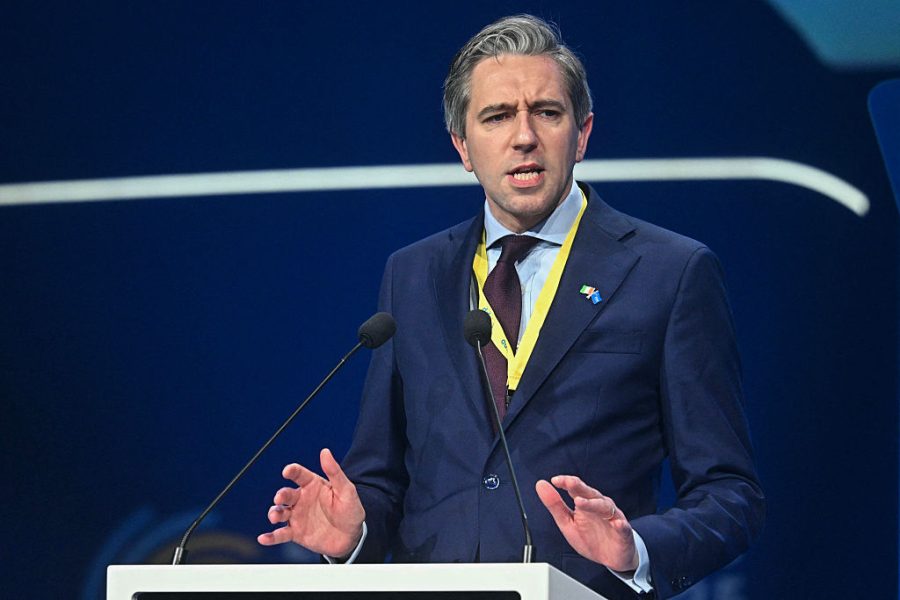The Stirling Prize is the Baftas for architects, a moment for auto-erotic self-congratulation. Awarded by the Royal Institute of British Architects, its premise is straightforward: it’s for Britain’s best building of the year. But this year, it seems the prize committee has struggled even with this. Among the six projects shortlisted for this ostensibly nationwide prize, four are in London and a couple could barely even be considered buildings at all.
The most tenuous nominee for a ‘best building’ – yet one with the best bookies’ odds – is the Elizabeth Line by Grimshaw Architects. One of the most expensive infrastructure projects in Europe with a much-delayed opening, it remains frustratingly unreliable. While this can’t be blamed on the architects, the station interiors can – and should – be.
The architecture of metro systems has a rich history, from Moscow’s ‘people’s palace’ luxury to Montreal’s subway and the Jubilee Line extension, where every station was a test bed for creative experimentation. Yet Grimshaw Architects have opted for a pallid utilitarianism that seems to say: ‘You should be grateful for any infrastructure at all, let alone get any delight from it.’
The Elizabeth Line’s nomination is like a fig leaf for Britain’s inability to build impressive infrastructure
Chucking out centuries of Underground-design wisdom, the architects have dispensed with any visual cues to help travellers identify stations. There’s nothing here that resembles the Piccadilly Line’s charming tiled patterns for the illiterate, Paolozzi’s mosaics or heraldic dragons at Bank. Instead, we have anonymous ‘consistency’. The central London platforms all look identical, meaning if you don’t read English, have dyslexia, or if you find someone blocking your view of the signs, you have to double check you’re at the right station. Despite its exorbitant cost, there are compromises everywhere: signage dwarfed by the cavernous spaces and stingy platform displays with which to find out if a train will ever make it past Paddington.
The tunnels are clad in porous concrete panels – what the architects ironically call ‘long-life architectural elements’ – and where they meet benches, there are the ghostly stains of the backs of the thousands of passengers past who have leant back on them. Transport for London is mulling awkward fixes, such as patching over them with lurid vinyl stickers. This alone should have disqualified it from the shortlist. Its nomination feels like a face-saving fig leaf for Britain’s chronic inability to build impressive infrastructure. I’m reminded of Sir Humphrey’s words: ‘We gave the architect a knighthood so that nobody would ever say that.’
The other non-building in the shortlist is the entire King’s Cross masterplan, which is in fact a collection of 70 new and restored buildings spanning 67 acres designed by 30 different architects. While no one can doubt how thorough its deep cleanse of this grotty industrial backwater and red-light district has been, forcing judges to compare the architectural quality of an entire postcode to a single building is perverse.
And that quality is a mixed bag: it’s mostly forgettable blocks containing new flats and offices, counterbalanced with its public spaces that are, thankfully, pleasingly generous and well used. There’s the odd blockbuster too: Stanton Williams’s thoughtful conversion of the Victorian Granary Building into the home of Central Saint Martins. At its centre is Heatherwick and Bjarke Ingels Group’s overbearing, almost finished behemoth for Google HQ, which marks the area’s transformation into a sanitised playground for Silicon Valley techno-yuppies.
At the opposite end of the scale is Chowdhury Walk, a mews of 11 council houses developed by Hackney Council. The architects Jessam Al-Jawad and Dean Pike are both veterans of David Chipperfield’s office, British architecture’s arch-minimalist – and it shows. Despite the public-sector budget, the two- and three-bedroom terraces are crisply detailed, arranged in an efficient sawtooth pattern on the squeezed site. Its touches are deceptively simple, such as the elegant joinery of the front door camouflaging the bin store and the patterns of the cobbling demarcating the private doorstep and public walkway. The brick houses rest on a robust-feeling granite base, which, as the architect reveals, disguises a cost-saving of using fewer bricks. No expense was spared, however, for its environmental bona fides: windows are triple-glazed and its internal structure is cross-laminated timber.
The end result is solidly crafted homes that trump many flimsy new-builds. Indeed, Hackney has sold four of the houses privately to help recoup costs, snapped up for around £750,000 and more. The private and socially rented homes are indistinguishable, inside and out, so council tenants must be incredibly pleased at winning the jackpot with this bit of municipal luxury. For Hackney’s legions of ineligible forever-renters, probably not so much.
This pales in comparison to the municipal empire-building of yesteryear. Park Hill Estate in Sheffield, the largest listed building in Europe, was built by the city council’s slum-clearance programme in the late 1950s, which razed an entire hillside of terraces and replaced them with a continuous wall-like megastructure of almost 1,000 flats up to 13 storeys high. Here, for the first time, were ‘streets in the sky’ – much-copied in later estates. This concept saw flats accessed from open-air decks on every third floor connecting the entire structure, emulating a street’s social life as neighbours were rehoused next to each other. Yet it was fanciful social engineering. Historian Nikolaus Pevsner quickly predicted it will ‘be a slum in half a century or less’. And he was right: by the 1970s, Park Hill and its elevated streets became a byword for deprivation, crime, and anti-social behaviour. (The ‘streets in the sky’ were finally fixed but not architecturally. Instead trouble-makers were simply priced out. Now Park Hill is gated and mostly privately owned.) It became Grade II* listed in 1998 following a campaign in which niche interest in its questionable innovations triumphed over the average Sheffielder preferring to ‘just knock it down’, encumbering the city with a protected carcass. The developer Urban Splash has since taken it over and tasked architects with rehabilitating it. But while the (also Stirling-shortlisted) first phase demanded a total reputational reset, hollowing out the concrete frame into something hardly recognisable, the second phase by Mikhail Riches Architects, shortlisted this year, followed a gentler, more unobtrusive approach. They scrubbed back the original multi-tone infill brickwork to its former glory, focused on making the flats fit for modern living and today’s energy standards, while preserving its raw appeal for brutalist fetishists. With half the shortlist made up of adaptations of existing buildings, the award showcases retrofitting, in keeping with its environmental agenda. Another nominee – that I’ve written about before in these pages – is the National Portrait Gallery renovation by Jamie Fobert and Purcell. They have stripped out decades of unsympathetic clutter and boldly relocated the entrance to the north in order to face a new public square: it’s a lesson in conservation with conviction. Once you overlook Tracey Emin’s unsightly signature scrawls in the new bronze doors the moves feel right, like it was always meant to be this way. I took issue with the curators’ revisionism of the country’s history, but a bit of historical revisionism in the building was more than welcome.
Finally, the undoubted underdog of the race is Wraxall Yard. While it doesn’t make lofty claims of national importance, it proves what can be achieved when client, architect and consultants, are working in lockstep. Nick Read, a farmer, was shaped by his mother’s experience of using a wheelchair after she developed multiple sclerosis and the struggle that entailed at home and on holiday. As a result, he decided to convert a romantically dilapidated dairy farm near Dorchester into accessible holiday cottages.
The design affords a sense of effortlessness to the inhabitants that able-bodied people take for granted
When the architect Clementine Blakemore was appointed, it also happened to be her first major project. Read’s trust in her was well-founded: throughout the building one can feel the fruits of Blakemore’s research, where she spent months honing the brief with Read, engaging with the Centre for Accessible Environments and speaking to countless people with disabilities to work out not just what would tick the boxes, but meaningfully restore a sense of independence for disabled users.
This included everything from ceiling hoists integrated into the roof trusses, grab-rails built into sinks, raisable kitchen worktops and beds to scuff-resistant materials at wheelchair height. Even outside the buildings, the landscaping was meticulously planned to ensure level access using the natural slope of the site, without ramps and other clumsy afterthoughts. This was all exquisitely integrated into the design, avoiding any institutional plastickiness and affording a sense of effortlessness to the inhabitants that able-bodied people take for granted.
The architecture is far from showy. Instead, Blakemore stepped back, teasing out the existing soul of the place. Teaming up with the structural engineer to retain as many of the original timber trusses as possible, she devised an assortment of repairs that preserved the farm’s layers of history. The barn’s windows, added ad hoc over the centuries, were kept and incorporated into layouts, creating a gratifying pattern of unexpected openings that affords even infants a view. Wraxall is not just competent architecture but a beautiful place.
Architecture awards often attract big projects and even bigger egos, and the Stirling Prize is one of the most substantial gongs going. Yet with Wraxall Yard on the shortlist, judges have all the ingredients to show what good architecture is really about. So why don’t they change the habit of a lifetime?
The winner of the Stirling Prize 2024 will be announced on 16 October.








Comments